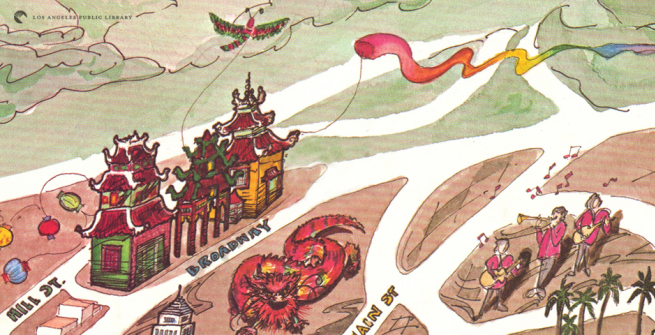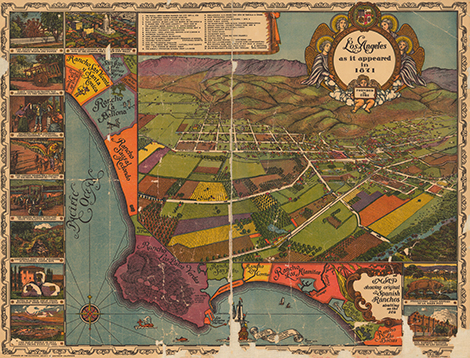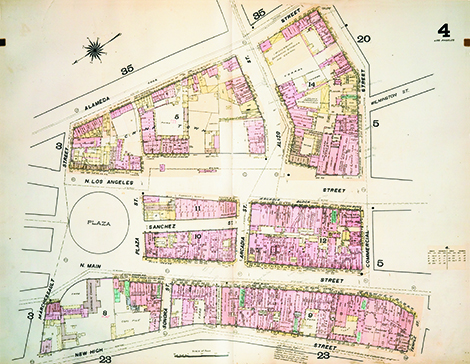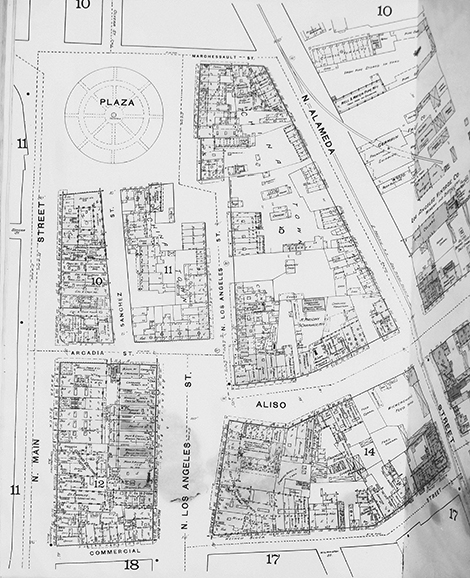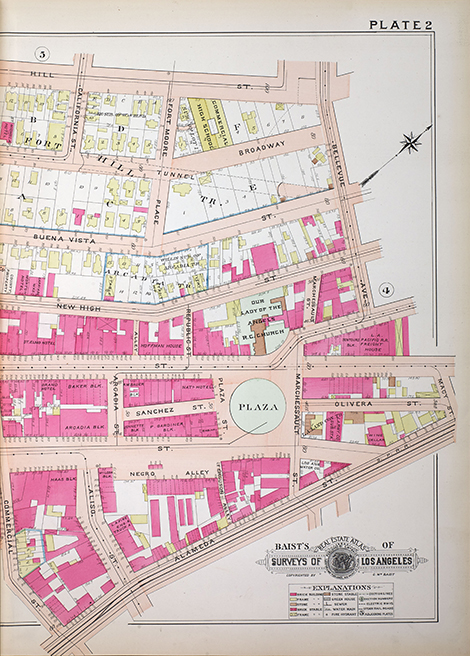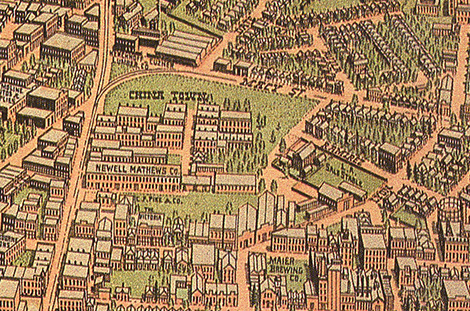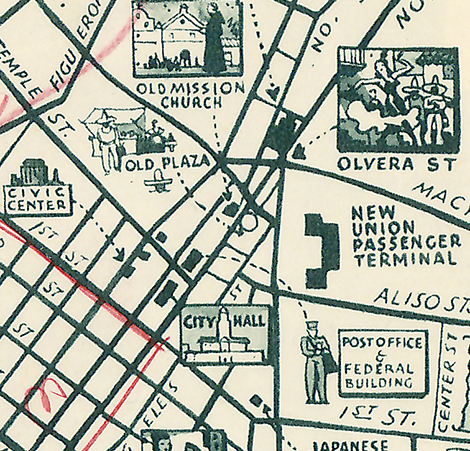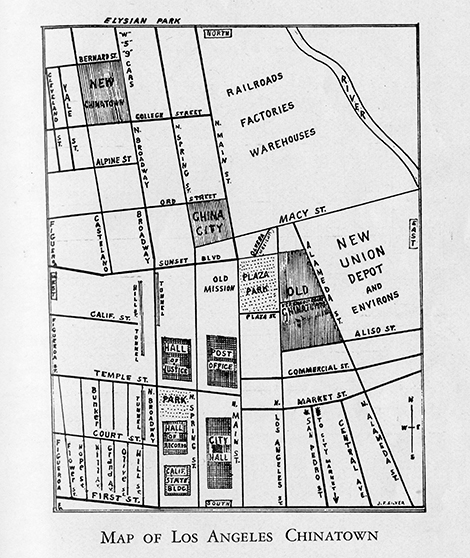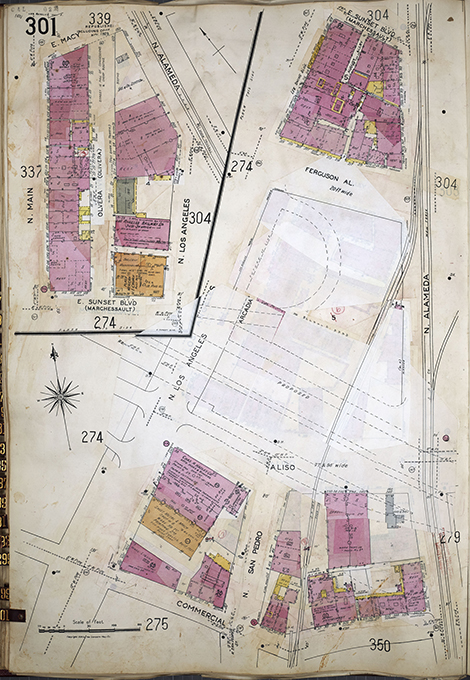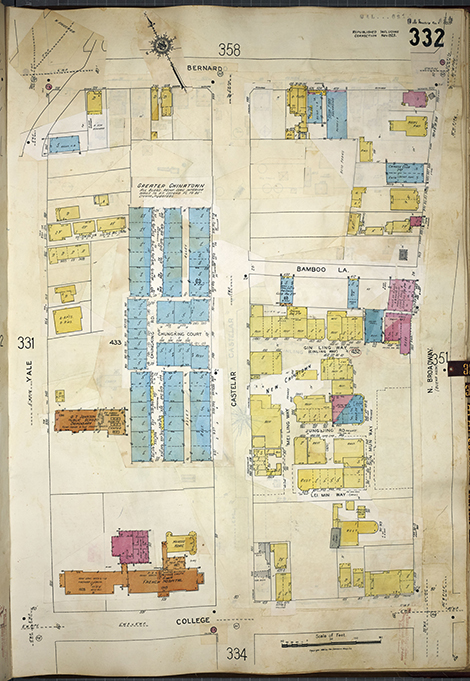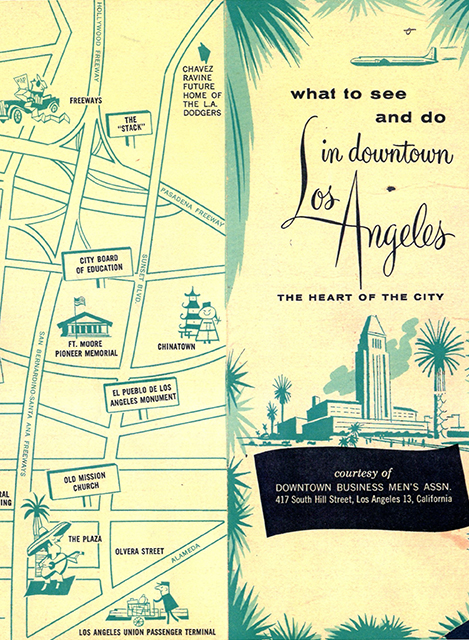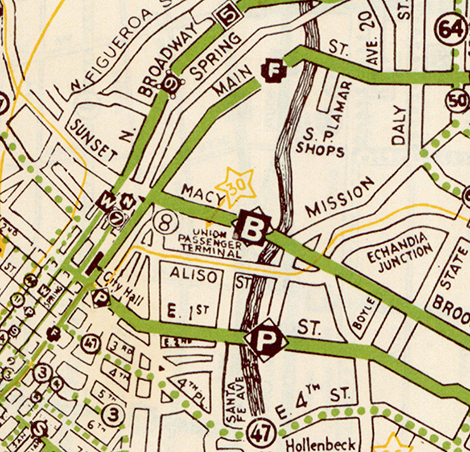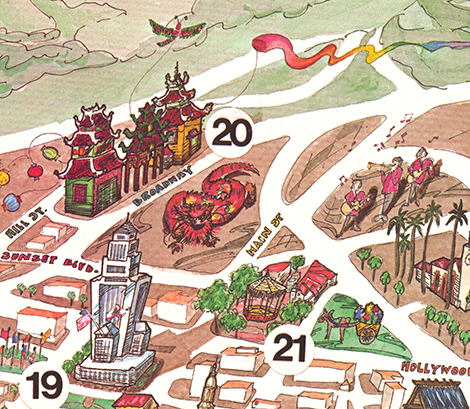Chinatown in Los Angeles has been demeaned and misunderstood for about a century and a half. It has never been considered the equal of the much more famous entities in San Francisco or New York but it was always just as important for immigrant communities who searched for a place in the so-called City of Angels. The reasons for the vagaries of our Chinatown range from overt racism to xenophobia to real estate economics. The fortunes of this small slice of downtown have wavered up and down dramatically and are still in flux as Chinatown is once more being reinvented just as it was in the 1890s, the 1930s, the 1980s and whatever you call this decade. Originally “Chinatown” was just a block-long, 50-foot wide dirt street also known as Ferguson’s alley but as the 20th century approached the place grew to many streets and some two-hundred buildings that featured profuse residences, an opera theater, several temples, and even a Chinese language telephone exchange. The neighborhood existed because Chinese laborers produce men, shopkeepers and domestics were not allowed to vote, to own property, to have their own businesses and farms. These economically challenged immigrants gravitated toward the comfort of their families in the area. Even in their own neighborhood they faced terrible discrimination and shared that end of the old pueblo with the poorest of the city’s population.
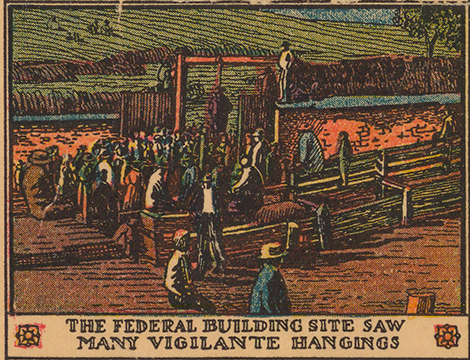
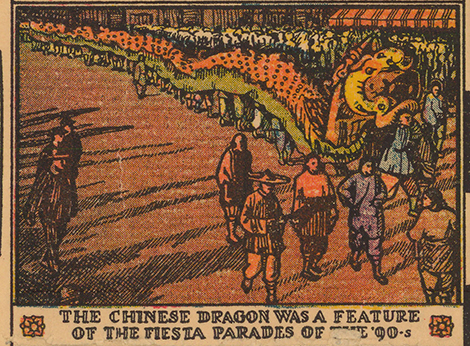
Yet, in popular imagination, Chinatown here was a hot-spot of illegal activity, and the lawless streets drew a certain crowd from the area to drink, gamble and find company in the arms of fallen angels. The strange cartographical phenomena of Chinatown is that it was often ignored since the streets may have seemed unsavory and out-of-towners were not encouraged to visit, that is until a suggestion might be made by locals who liked the high-life. However, we do have several intimate looks in the Dakin Atlas or our Sanborn Fire Insurance atlases that name the dens of sin and label Opium joints, saloons, tenements, gambling establishments, and buildings labeled I.F. for houses of ill fame. While the common street guides or fold-out maps show a dot on the map old Chinatown was a place of many stories where families lived good lives alongside shady operations where rubes were fleeced and Angelenos wiped their brows with the devil’s kerchief.
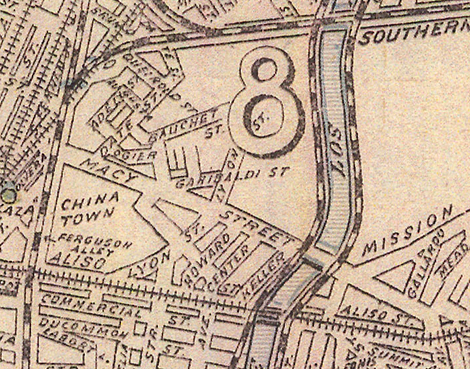
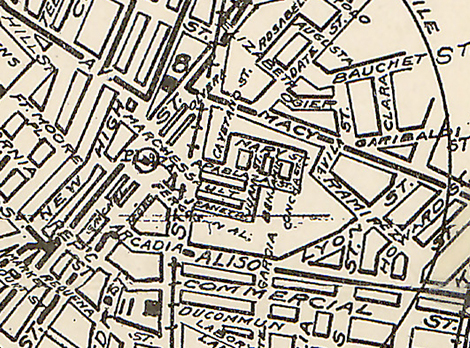 Rueger’s map of the city in 1902, once more excluding name Chinatown but including Ferguson’s alley.
Rueger’s map of the city in 1902, once more excluding name Chinatown but including Ferguson’s alley.There are plenty of arguments about the locations of local history around Southern California and the internet swarms with know-it-alls and true scholars who will fight to the death of reason over spots on the map. The whereabouts of the original pueblo, the actual Tongva village of Yangna, the big sycamore tree known as El Aliso, Frenchtown, Sonoratown, the Zanja Madre and the tunnels of the Lizard People are the subjects of constant battles over location, location, location. In the case of Chinatown, we have archaeological evidence of the people and places that were founded by Cantonese coming here to escape famine and oppression. Unfortunately, the oppression they found here was brutal and part of the reason why Chinatown became what it was for over half a century. Some of these maps tell the story of this colorful but sometimes tragic part of town.
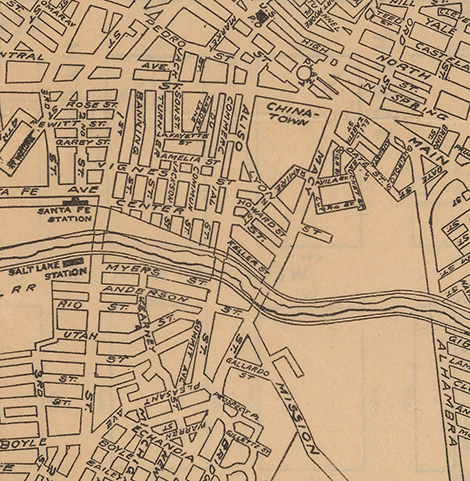
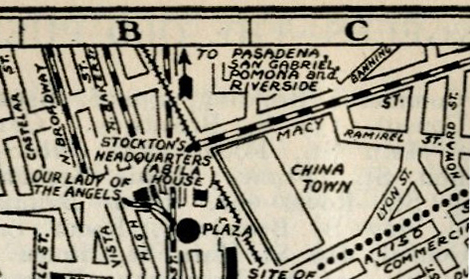 Rider’s Travel Guide of 1924 showing Chinatown but leaving much unsaid in the guide text.
Rider’s Travel Guide of 1924 showing Chinatown but leaving much unsaid in the guide text.
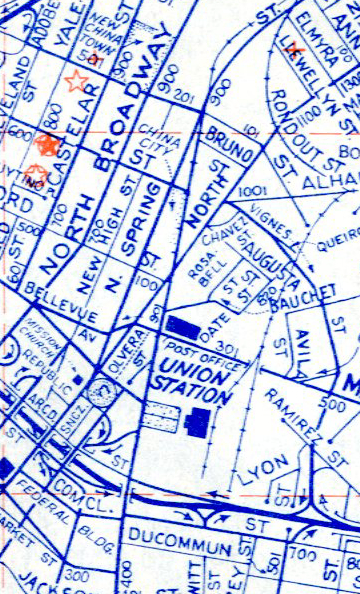
Related Event
Join us for a free film screening of the film Chinatown (1974) as part of our Big Read 2019 celebration. The film screening will take place after a brief presentation touching on stories of immigration and gentrification.
